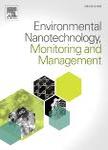版权所有:内蒙古大学图书馆 技术提供:维普资讯• 智图
内蒙古自治区呼和浩特市赛罕区大学西街235号 邮编: 010021

作者机构:Department of Mechanical Engineering Faculty of Engineering Brawijaya University MT Haryono 167 Malang 65145 Indonesia Department of Chemical Engineering Faculty of Engineering Brawijaya University MT Haryono 167 Malang 65145 Indonesia Department of Chemistry Faculty of Science and Data Analytics Institut Teknologi Sepuluh Nopember Arief Rahman Hakim Surabaya 60111 Indonesia
出 版 物:《Environmental Nanotechnology, Monitoring and Management》 (Environ. Nanotechnol. Monit. Manag.)
年 卷 期:2025年第23卷
主 题:Bioplastic Cellulose Hydroxyapatite Membranes
摘 要:Bioplastic membranes, particularly those based on polyvinyl alcohol (PVA), are increasingly explored for their environmental benefits and diverse applications. However, these bioplastics often suffer from high water absorption and limited mechanical durability, restricting their practical use compared to conventional plastics. This study aims to address these limitations by incorporating nanocellulose from Cordia dichotoma fiber (CDf) and a hydroxyapatite (HA) coating derived from blood clam shells—a novel and sustainable approach. The HA-coated PVA-nanocellulose bioplastic was evaluated for tensile strength, water absorption, and antibacterial activity, using Fourier-transform infrared spectroscopy (FTIR), scanning electron microscopy (SEM), X-ray diffraction (XRD), and thermogravimetric analysis (TGA). Results showed substantial improvements, with tensile strength increasing from 5.62 to 12.63 MPa and elastic modulus from 6.73 to 15.85 MPa, attributed to enhanced cross-linking from the HA layer. Additionally, antibacterial testing showed weak inhibition zones (5 mm) against E. coli and S. aureus, indicating mild antimicrobial properties. This research contributes to sustainable bioplastic technologies by leveraging waste-derived materials to improve functionality, making these biocomposites promising for packaging, water purification and biomedical applications, and other fields requiring durable, eco-friendly materials. © 2024 Elsevier B.V.